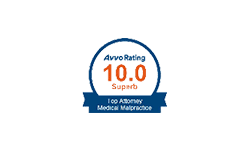There is a long list of benefits attributable to the simple act of walking. It is a great cardio workout that doesn’t require equipment or a gym membership, and getting in steps during the day also provides the walker with a boost of vitamin D from the sun. Even with all its benefits, walking is not without risks. Sadly, most of those risks come from drivers who might not be paying attention. Saying safe while walking starts with understanding where most pedestrian accidents occur.
Key Findings About Pedestrians
The City of Philadelphia conducted a comprehensive study of accidents involving pedestrians, which they published in May of 2021. They tracked pedestrian-involved incidents from 2014-2018 and learned the following regarding where these accidents occurred:
- Half of all pedestrian fatality accidents occurred on the same 19% of streets in Philadelphia
- 75% of all pedestrian fatalities happened within 300 feet of public transit stops
- Two-thirds of all injury crashes involving pedestrians also occurred at intersections
The report also found that a majority of pedestrian crashes took place in the following highly trafficked pedestrian areas:
- Roosevelt Boulevard
- North Broad Street
- Lehigh Avenue
It is also important to note that half of all the pedestrian fatalities that occurred took place between 7 p.m. and 6 a.m., and a quarter of those incidents took place after midnight.
Additional Risk Areas for Walkers
According to the National Safety Council, there were 9,188 pedestrians that were killed in traffic and non-traffic accidents in 2022 in our country. There are additional risk areas that pedestrians need to be aware of when out walking or hiking. Here are the other zones you need to be on alert for to avoid a potential pedestrian accident:
Roadsides and Shoulders
Whereas sidewalks are considered designated pedestrian areas, roadsides and shoulders are not. The latter could be low-visibility areas that drivers aren’t expecting to encounter pedestrians on.
Parking Lots
The majority of drivers in parking lots reduce their speeds. Unfortunately, those same drivers are focused on finding a parking spot. They might not be looking at folks walking between their cars, which could increase the potential for an accident.
Shared Paths or Trails
When you go for walks on paths or trails, you share that space with bicyclists, skateboarders, and skaters. A congested path can also increase the risk of an accident, even without cars.
Safety Tips for Pedestrians
To stay safe when walking, you need to be proactive. For instance, if you’re walking for exercise at night, you should carry a flashlight or wear bright clothing. Just as drivers need to avoid texting or reading something on their phones, you should also avoid that when walking. If you’re looking down at a phone, you can’t see who is walking towards you, let alone driving through an intersection.
Additionally, when crossing the street, you should strive to make eye contact with the driver approaching or stopping at the light. That way, you are mutually aware of each other. It is also important to take note of any traffic lights. Running across the road to beat a red light is something that drivers do, too. Saving those few seconds is worth it if you can avoid an accident.
Proving Liability in a Pedestrian Accident
If you are injured as a pedestrian, you need to prove liability by establishing the same four elements. This is what you need to establish:
Duty of Care
This refers to the responsibility every driver has to follow the rules of the road and not drive distracted or under the influence or in some other reckless way.
Breach of Duty of Care
Next, you have to establish that the motorist who struck you breached their duty of care. A perfect example is if a driver is speeding through an intersection. That is a clear breach of duty of care.
Direct Cause or Causation
You also have to prove that the breach of duty of care is what caused your accident.
Damages
You then need to present evidence that the accident caused injury, which led to losses. Those losses can include medical bills, lost wages, and pain and suffering.
Proving these elements is not something that you should attempt to do on your own. Thankfully, the legal team at Shrager, Sachs, & Blanco has the experience to help you recover those damages. You don’t have to wait until you fully recover from your injuries before speaking to us. Call to schedule a free consultation to discuss your accident today.









